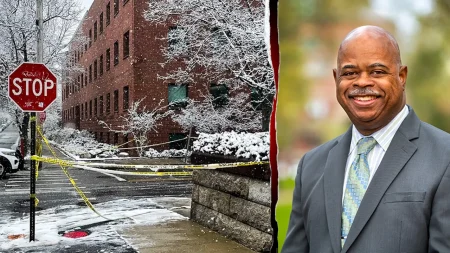Air Pollution’s Hidden Impact: How Urban Air Quality Affects Marathon Performance
Toxic Air Slowing the Pace: New Research Shows Direct Link Between Pollution and Athletic Achievement
In a groundbreaking study that bridges environmental science and athletic performance, researchers have uncovered compelling evidence that marathon runners consistently record slower finishing times in cities plagued by higher concentrations of air pollutants. This discovery adds a new dimension to our understanding of how environmental factors directly impact human physical performance, even among elite athletes who represent the pinnacle of cardiovascular fitness and endurance training.
The research, which analyzed data from major marathons across numerous urban centers worldwide, demonstrates a clear correlation between elevated levels of particulate matter (PM2.5 and PM10), nitrogen dioxide, ground-level ozone, and other airborne contaminants and diminished running performance. These microscopic particles, many of which are invisible to the naked eye, appear to have a measurable effect on athletic achievement that cannot be explained by other variables such as temperature, humidity, course difficulty, or competitor experience levels.
“What makes these findings particularly significant is that marathon runners represent a population with exceptional respiratory capacity and cardiovascular health,” explains Dr. Elena Morales, the study’s lead researcher and environmental health specialist at the University of Barcelona. “If we’re seeing measurable performance decrements in these athletes, we must consider the implications for the average citizen who exercises outdoors in these same environments. The data suggests that no one is immune to the performance-limiting effects of breathing contaminated air, regardless of fitness level.”
The Science Behind the Slowdown: How Pollutants Interfere with Athletic Performance
The physiological mechanisms responsible for this performance decline are multifaceted but increasingly well-understood. When athletes inhale polluted air during high-intensity exercise, the particulate matter and gaseous pollutants trigger inflammatory responses in the respiratory system. This inflammation restricts airflow, reducing oxygen uptake efficiency precisely when the body demands maximum oxygen delivery to working muscles. Simultaneously, certain pollutants like carbon monoxide bind to hemoglobin more readily than oxygen, further compromising the blood’s oxygen-carrying capacity.
“During a marathon, runners typically breathe in and process 10 to 15 times more air than a person at rest, making them particularly vulnerable to whatever is in that air,” notes Dr. James Harrison, a sports medicine physician and pulmonologist who was not involved in the study but reviewed its findings. “The increased ventilation rate means greater exposure to any airborne toxins present in the urban environment. What might be a manageable pollution level for someone walking casually becomes potentially performance-limiting for an athlete pushing their physiological systems to the maximum.”
The research found that for every 10-microgram increase in PM2.5 concentration (fine particulate matter smaller than 2.5 micrometers), marathon finishing times increased by an average of 1.2 minutes. This may seem minimal, but in elite competition where seconds determine podium positions, such an impact is substantial. For recreational runners, the effect was even more pronounced, with average slowdowns of 3-4 minutes under the same conditions. Importantly, these effects remained statistically significant even after researchers controlled for weather conditions, course elevation profiles, and runner demographics.
Global Patterns: How Air Quality Varies Across Major Marathon Destinations
The study examined marathon results from twenty major international cities, creating a unique global map of how air quality affects athletic performance across different urban environments. Cities with stringent environmental regulations and robust public transportation systems—like Copenhagen, Stockholm, and Vancouver—showed both the cleanest air measurements and the smallest pollution-related performance penalties. Conversely, marathons in megacities with persistent air quality challenges—including Beijing, Delhi, and Mexico City—demonstrated the most significant negative impacts on runner performance.
“What’s particularly interesting is that we’re seeing these effects even in cities that technically meet current international air quality standards,” observes environmental policy analyst Dr. Sophia Chen. “This raises important questions about whether our current standards are adequate for protecting public health, especially for individuals engaged in outdoor physical activity. Perhaps we need separate, more stringent air quality thresholds for days when major outdoor sporting events are scheduled.”
The research also revealed seasonal patterns, with pollution-related performance decrements more pronounced during certain times of the year. Winter marathons in cities that rely heavily on fossil fuel heating showed greater impacts, while cities experiencing seasonal agricultural burning in surrounding areas saw temporary but significant spikes in pollution-related performance issues during those periods. These findings suggest that race organizers might benefit from considering seasonal air quality patterns when scheduling major events.
Beyond Performance: The Broader Health Implications for Athletes and Urban Residents
While the immediate focus of the study was on athletic performance, the researchers emphasize that their findings have far broader public health implications. The same pollutants that slow marathon runners also contribute to respiratory diseases, cardiovascular problems, and other health issues among the general population. For athletes who train regularly in polluted environments, the cumulative exposure may present long-term health risks that extend well beyond race day performance concerns.
“Marathon runners experiencing performance deficits represent just the visible tip of a much larger public health iceberg,” warns public health epidemiologist Dr. Marcus Wong. “These athletes feel the acute effects because they’re pushing their bodies to extremes, but everyone living in these cities is breathing the same air day after day. The chronic exposure may not manifest as clearly as a slower marathon time, but it’s silently affecting cardiovascular and respiratory health across the entire population.”
This perspective is particularly concerning given that running and other outdoor exercises continue gaining popularity in urban centers worldwide. The global running boom has coincided with increasing urbanization, creating a situation where more people are exercising in environments that may limit the very health benefits they’re seeking from physical activity. Some medical experts have begun recommending that urban residents check air quality indexes before outdoor workouts, suggesting indoor exercise alternatives during pollution peaks.
Solutions on the Horizon: How Cities and Event Organizers Are Responding
In response to these findings, some marathon organizers have begun implementing changes to mitigate pollution impacts. Several major marathons now include air quality monitoring as part of their race-day planning, with contingency protocols for extreme pollution events. The Tokyo Marathon, for instance, has established air quality thresholds that would trigger event modifications or, in extreme cases, postponement. Similarly, the organization behind the Shanghai International Marathon has experimented with early morning start times to avoid peak traffic emissions.
“We’re seeing a growing awareness among event organizers that environmental conditions are a critical component of athlete safety and fair competition,” says Leila Jackson, sustainability director for the International Marathon Association. “Just as races have established protocols for extreme heat or lightning, we’re now developing similar frameworks for air quality. The goal is to ensure that athletes can compete at their best while minimizing health risks.”
On a broader scale, some cities have used major sporting events as catalysts for environmental improvement. Beijing’s preparations for the 2008 Olympics included aggressive temporary measures to reduce industrial emissions and vehicle traffic, demonstrating that significant short-term air quality improvements are possible with sufficient political will. More sustainably, Paris has leveraged its position as a marathon destination and Olympic host to accelerate transportation electrification and expand car-free zones in the city center.
The Future of Urban Athletics: Balancing Environmental Challenges and Sporting Tradition
As climate change and urbanization continue reshaping our environment, the relationship between air quality and athletic performance will likely receive increasing attention from sports scientists, medical researchers, and event organizers. The current research suggests that pollution effects on performance may be just one aspect of a complex interaction between changing environmental conditions and human athletic capability.
“We may be entering an era where environmental factors play an increasingly dominant role in athletic performance and event planning,” predicts sports futurist and environmental researcher Dr. Aiden Kwon. “Marathon courses that have remained unchanged for decades may need reconsideration based on evolving air quality patterns. Training methodologies may need to incorporate pollution avoidance strategies. Even the seasonal timing of major events might shift to accommodate changing environmental realities.”
For individual athletes, particularly those training in urban environments, the research offers practical insights. Training during lower pollution hours (typically early morning), utilizing parks and green spaces where pollution levels are often lower, and monitoring local air quality are becoming important components of serious training regimens. Some elite athletes have even incorporated air quality considerations into their choice of training locations, with altitude training camps now selected not just for their elevation but also for their clean air.
As this field of research continues to develop, one thing remains clear: the invisible barrier of air pollution represents a tangible obstacle to human athletic achievement. As cities work to address their air quality challenges, they’re not just improving public health but also creating environments where human physical potential can be more fully realized. The finish line, it seems, isn’t just a matter of training, talent, and determination—it’s also increasingly a matter of the air we breathe along the way.









